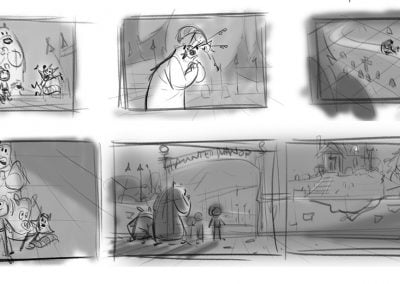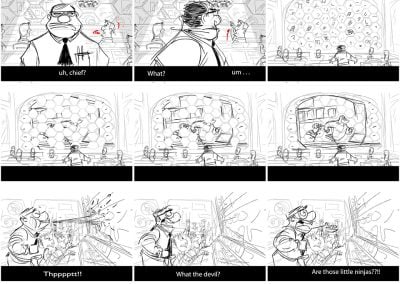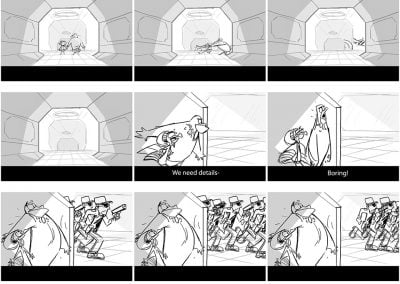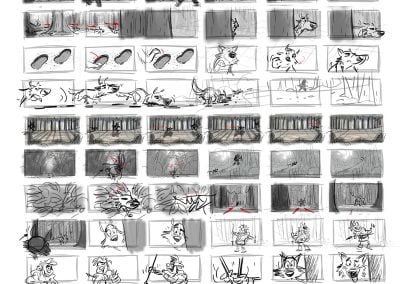Intermediate Storyboarding
Learn how to visually communicate your story ideas in this 6-week workshop
Get Ready to Tell Your Story
Storyboard artists are tasked with the important job of creating the first visualizations of scripts and narratives. They tell stories across a variety of mediums, ranging from animated films to commercial advertising to comic books.
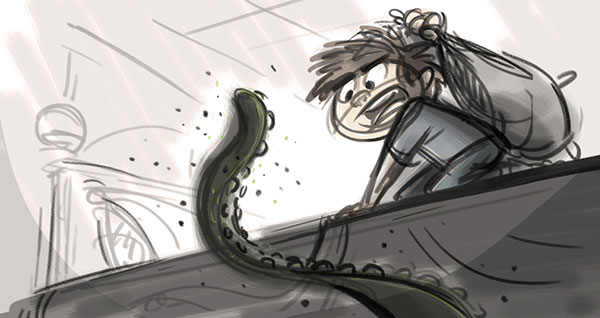
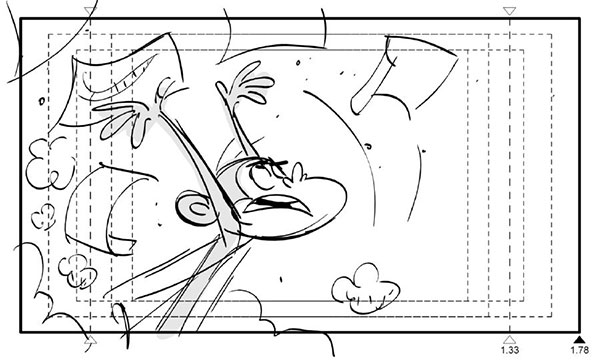
In our workshop you’ll learn the skills you need to create captivating storyboards that properly tell a story and convey emotion. Start your journey to become a professional storyboard artist for a film or game studio, or even become the creator of your own unique animation!
6-WEEK WORKSHOP
$899 USD
Pro Storyboard Artists Mentor You to Be Successful
Our workshop allows you to learn, practice, and get 1:1 feedback and reviews from our mentors who work as professional storyboard artists. You will have the chance to learn from them in live conversations as they share insights about what studios are working on and what qualities they look for in a storyboard artist. Our mentors will work directly with you to grow and improve your skills.


Mike Kunkel
Story and Development Artist
The Astonish Factory
Mike Kunkel is first and foremost a cartoonist! Writing and drawing cartoons is something he’s wanted to do since he was a kid and now, with over 20 years of experience in the animation industry, Mike has done just that by working on numerous TV and film projects as a director, story and development artist, character designer, screenwriter, and animator.
Mike has worked for studios such as Warner Bros, Nickelodeon, Cartoon Network, Sony Entertainment, Universal Pictures, and Walt Disney Studios.
As a published writer and artist, Mike was nominated three times for the prestigious Eisner Awards and four times for the Ignatz Awards. He’s the creator of the two-time Eisner award-winning comic book series, “Herobear and the Kid,” and as a designer in TV, he won the Annie Award for Best Character Design in an Animated Television Production.
*All times are in Pacific Time.
Examples of Mike Kunkel’s Work
Click images to enlarge
1-on-1 Feedback from a Studio Pro
During this 6-week workshop, you’ll have live Q&As with your mentor each week in addition to receiving an assignment designed to build your skills. Plus, your mentor will review and critique each of your assignments and provide you with a video of their feedback so you can improve your work.
Learn from an award-winning industry veteran
With over 20 years of experience in the industry, Mike Kunkel will guide you through the essentials of storytelling and storyboarding. His tailored curriculum will help you understand the workflow and thought process of a professional story artist. A multiple Eisner award-winning cartoonist and an Annie award-winning character designer, Mike will teach you what it takes to be a storyboard artist.
Storyboarding Student Gallery
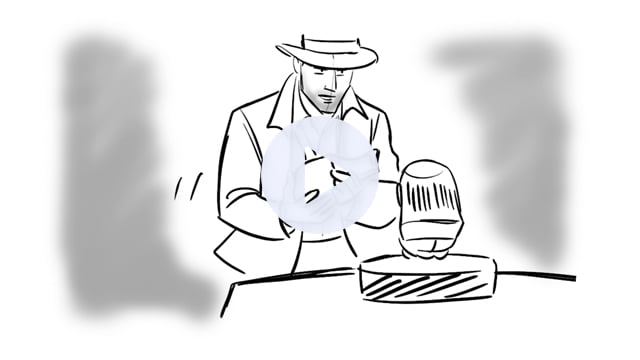
Jessica Ferrante
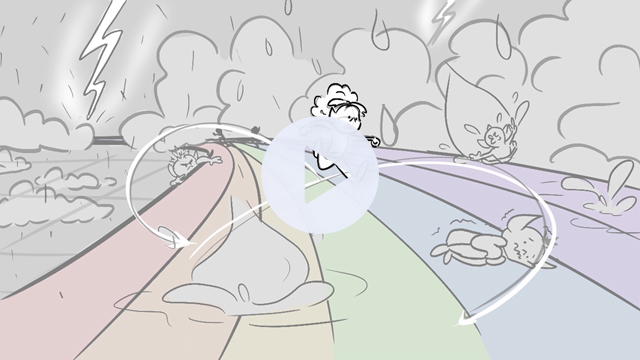
Jessica Elias
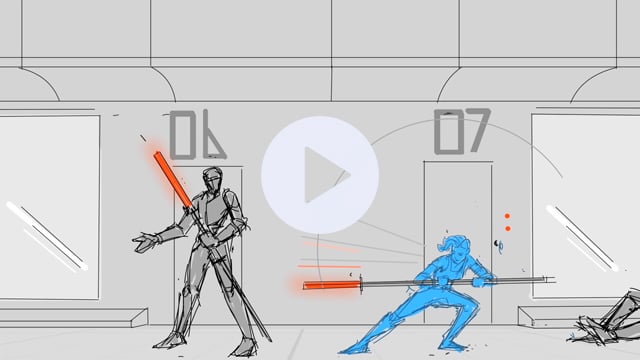
Eric Harper
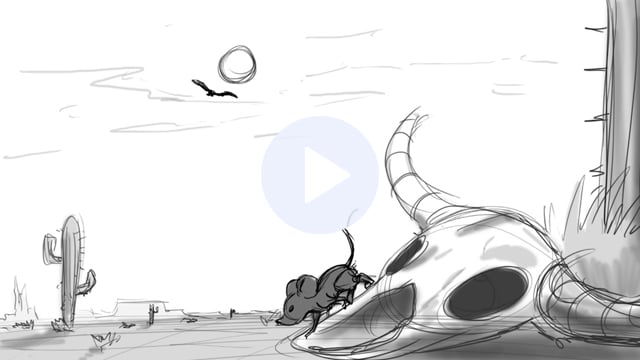
Fasil Douglas
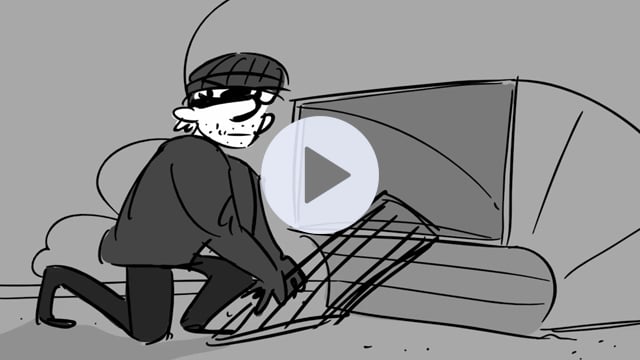
Jane Morrison
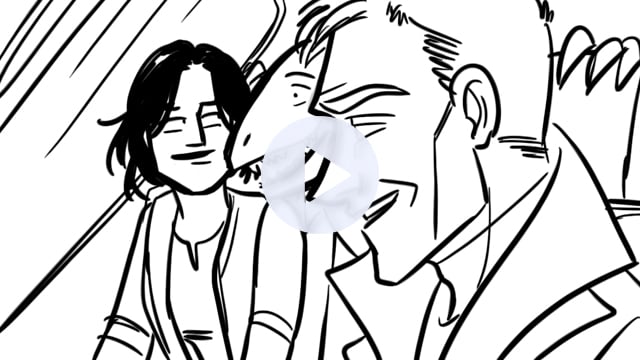
Jessica Ferrante
What You’ll Learn in Intermediate Storyboarding
Week 1
Using Reference
Reference can be used to inspire and guide a visual storyteller. In storyboarding we want to have a good library in our brain. Learn to see the storytelling that is happening and study reference to give your storytelling a boost. In this session, we’ll use in-class demonstrations to examine a scene’s flow and learn how reference can help story artists.
Week 2
Conflict, Tension, and the Reveal
How do we reveal information or surprise the audience with something? Keep your audience curious. Make them ask, “What’s gonna happen next?” Introducing a “Tension Moment” between characters or into a situation engages the audience’s curiosity and creates anticipation. It connects and bonds characters. The outcome can be comedy or drama, but no matter what it is, it’s an emotion.
Week 3
Inventing Story
Telling a story that matters is our goal as storytellers. Funny, dramatic, poignant, sad, triumphant . . . in the end we want to tell stories that connect with an audience. We want them to connect with a character or group’s goals and needs. But HOW do we come up with stories/ideas when we’re stuck? This session will share ways to spark imagination and create stories. It will help to guide your creativity in scenes, sequences, and overall storytelling.
Week 4
Visual Story Guiding
Imagine you’re planning out a story. Where should an audience look? Is that the right shot for the scene or moment? Is everything going in the correct screen direction? When we storyboard, we can get caught up in the story on the page, forgetting that an audience has to be able to naturally follow the pace and flow of our visuals. In this session, we’ll refresh our basics and also discuss some tricks and advanced concepts of visual storytelling.
Week 5
Both Action AND Character Matter
Even in the middle of an action sequence we still want to care about the characters. We want to feel something for the action that is happening. How do we do that? Remind the audience that the characters matter, they are interesting, and they have goals. Don’t lose character focus during action.
Week 6
Scene Pitching, Animatics, and Portfolios
Once you’ve storyboarded a scene/sequence/story, how do you present it? When pitching scenes and sequences, remember that it’s a performance. Remember that your portfolio represents you. Can you create a watchable performance/moment with an animatic? In this final session, we’ll discuss sharing your work in different forms and also have in-class pitches of stories.
Course Requirements for Intermediate Storyboarding
Course Details
LIVE Q&As | Weekly 1-Hour Q&As
ASSIGNMENTS | 5 Animation Exercises
SOFTWARE |
- Toon Boom’s Storyboard Pro is recommended. Student pricing is available. Alternate free versions will be provided in class.
- Students are also required to use a simple video editing tool like Videopad Home Edition or equivalent in order to prepare and upload submissions for review.
HARDWARE |Meet Minimum Requirements
AGE | 18 Years or Older
LANGUAGE | Taught in English
Skills You Need Before You Start
Intermediate Storyboarding requires you to have basic storyboarding experience because it picks up where Storyboarding 01: Fundamentals left off. The workshop is not graded so that you feel comfortable learning the concepts at your own pace.
What You’ll Learn
Once you’ve completed our workshop, you’ll have a solid understanding of the skills and techniques used in the storyboarding industry, including:
- Experience turning a concept or script into a clear, visual story
- Confidence to create a storyboard set of your own narrative
- How to adapt your storyboard into an animatic to create a visual, timed narrative on screen
- Ability to critique real film examples to see how the pros storyboard successfully
- How to present and pitch your finished story to a studio
This workshop will build on the fundamentals of visual storytelling and help you refine and advance your storyboarding abilities to the next level! Through in-class demos and hands-on assignments, the course will help you fine-tune your storyboarding techniques and create a foundation for your own portfolio, while preparing you to generate and present your own stories.
You will explore more intermediate-level techniques and workflows to refine your storyboarding skill set, ultimately learning how to create and pitch your own stories to industry standards.
FAQ for Intermediate Storyboarding
Where do storyboard artists work?
Storyboard artists have one of the most flexible positions and can work across the entertainment industry in video games, films, TV shows, commercials, comics, and more.
What salaries do storyboard artists earn?
According to data from Glassdoor and Payscale, storyboard artists can earn anywhere from $20,000 to $60,000 USD a year, depending on the company and the scale of the project they are working on.
What's the difference between an animatic and a storyboard?
An animatic is simply a roughly animated storyboard that allows the director to see the flow of the narrative. Animatics can feature sound and subtitles to give a better understanding of how the final animation will look. They don’t cost much or take a lot of time, so studious can quickly create and edit them.
What Storyboarding Students are Saying
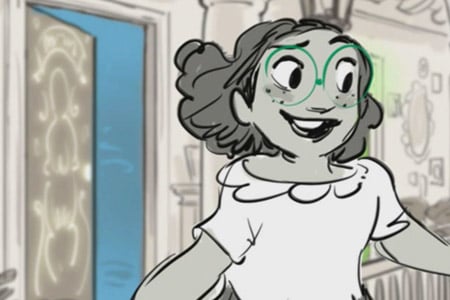
Great Experience
Such a great experience. I learned things which I’ve had a hard time finding classes about in real life. The teacher has lots of experience and the critiques are very insightful and helpful.
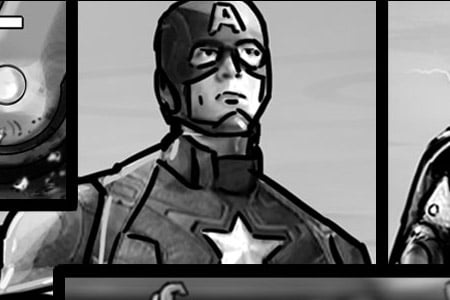


Not Just a Course
I am really glad I did this storyboard workshop with Mike! The content, feedback, and open minded way of teaching made me love cinema again. I felt that the mentor was not just giving us a course but was also sharing his passion!
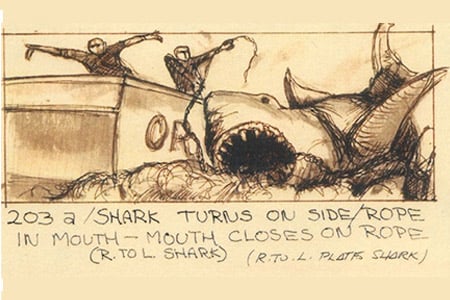


Invaluable
Mike was an incredible teacher, the feedback he gave over the course was invaluable. The course taught me so much about clear storyboarding and visual storytelling, as well as helping me develop my drawing skills.
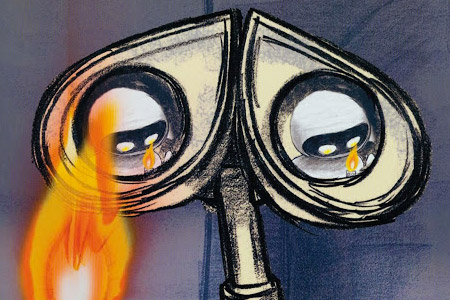


Helped Me Build Confidence
Mike was positive and informative with his critiques. It always felt like a collaborative effort where he built on the direction I was going. Even if he suggested new directions, it was always in addition to trying to see where I was going with my work. It was a very encouraging experience that helped build my confidence
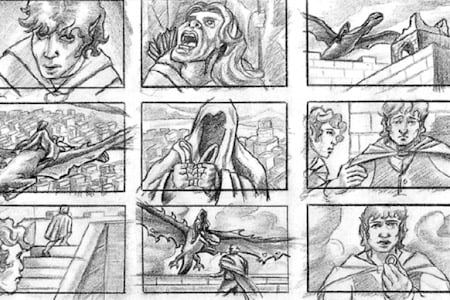


Emphasis on Film Study
I loved the ambitious nature of the assignments, and the emphasis on film study to learn and improve storyboarding skills. I also loved the flexible nature of the assignments—there was a bare minimum of art that was expected, but it felt like you had free reign to push yourself and take your assignments as far as you could within a week’s time.



Great Experience
Such a great experience. I learned things which I’ve had a hard time finding classes about in real life. The teacher has lots of experience and the critiques are very insightful and helpful.



Not Just a Course
I am really glad I did this storyboard workshop with Mike! The content, feedback, and open minded way of teaching made me love cinema again. I felt that the mentor was not just giving us a course but was also sharing his passion!



Invaluable
Mike was an incredible teacher, the feedback he gave over the course was invaluable. The course taught me so much about clear storyboarding and visual storytelling, as well as helping me develop my drawing skills.



Helped Me Build Confidence
Mike was positive and informative with his critiques. It always felt like a collaborative effort where he built on the direction I was going. Even if he suggested new directions, it was always in addition to trying to see where I was going with my work. It was a very encouraging experience that helped build my confidence



Emphasis on Film Study
I loved the ambitious nature of the assignments, and the emphasis on film study to learn and improve storyboarding skills. I also loved the flexible nature of the assignments—there was a bare minimum of art that was expected, but it felt like you had free reign to push yourself and take your assignments as far as you could within a week’s time.
Related Courses
If you’re interested in storyboarding, we think you’ll love these courses!
Story I: Storyboarding
Fundamentals
6-Week Workshop
Learn basic storyboarding techniques and skills.
Introduction to
Digital Painting
6-Week Workshop
Learn digital painting techniques and create your own works of art.
Visual Development:
Principles of Design
6-Week Workshop
Design appealing characters using shape language and color theory.
